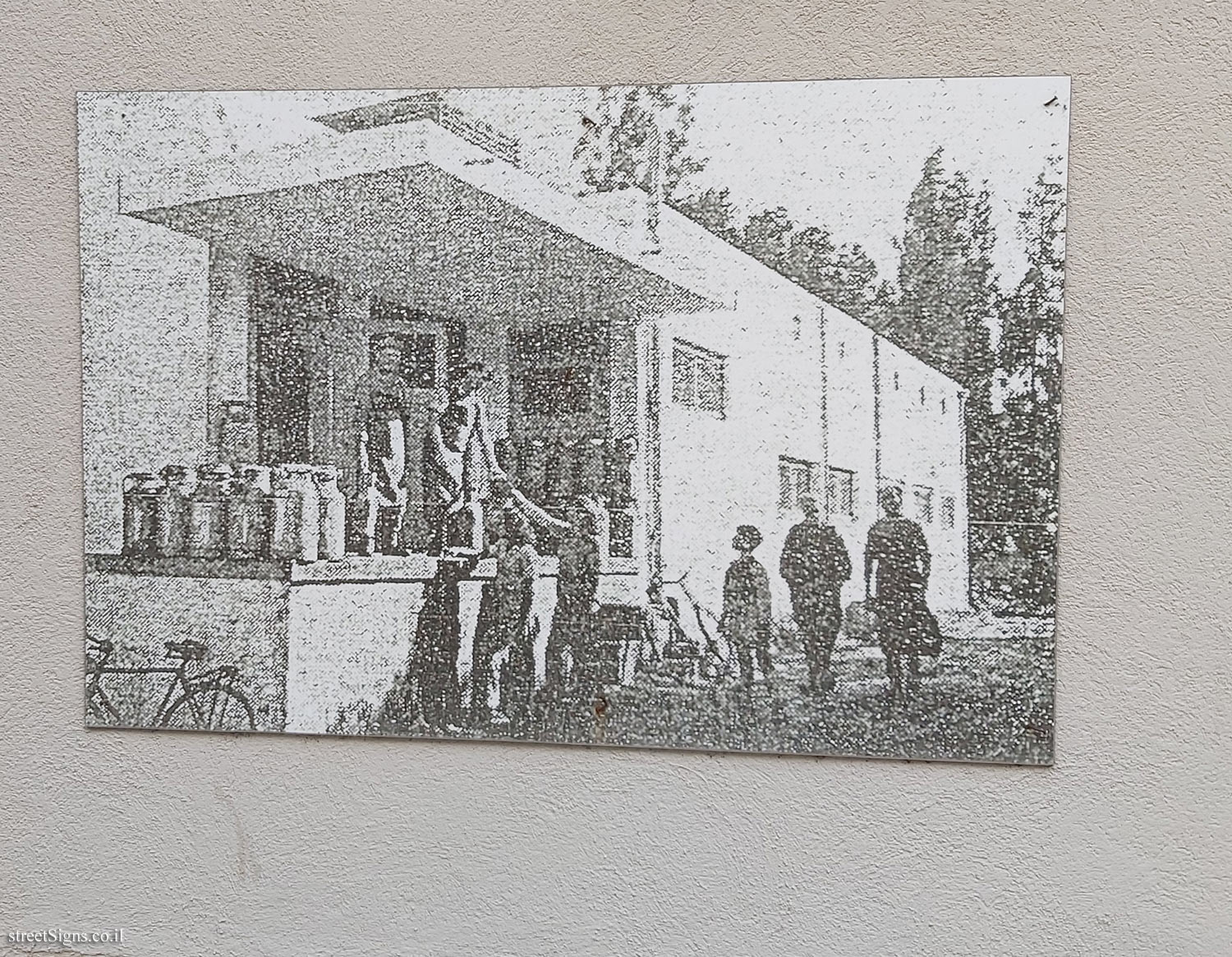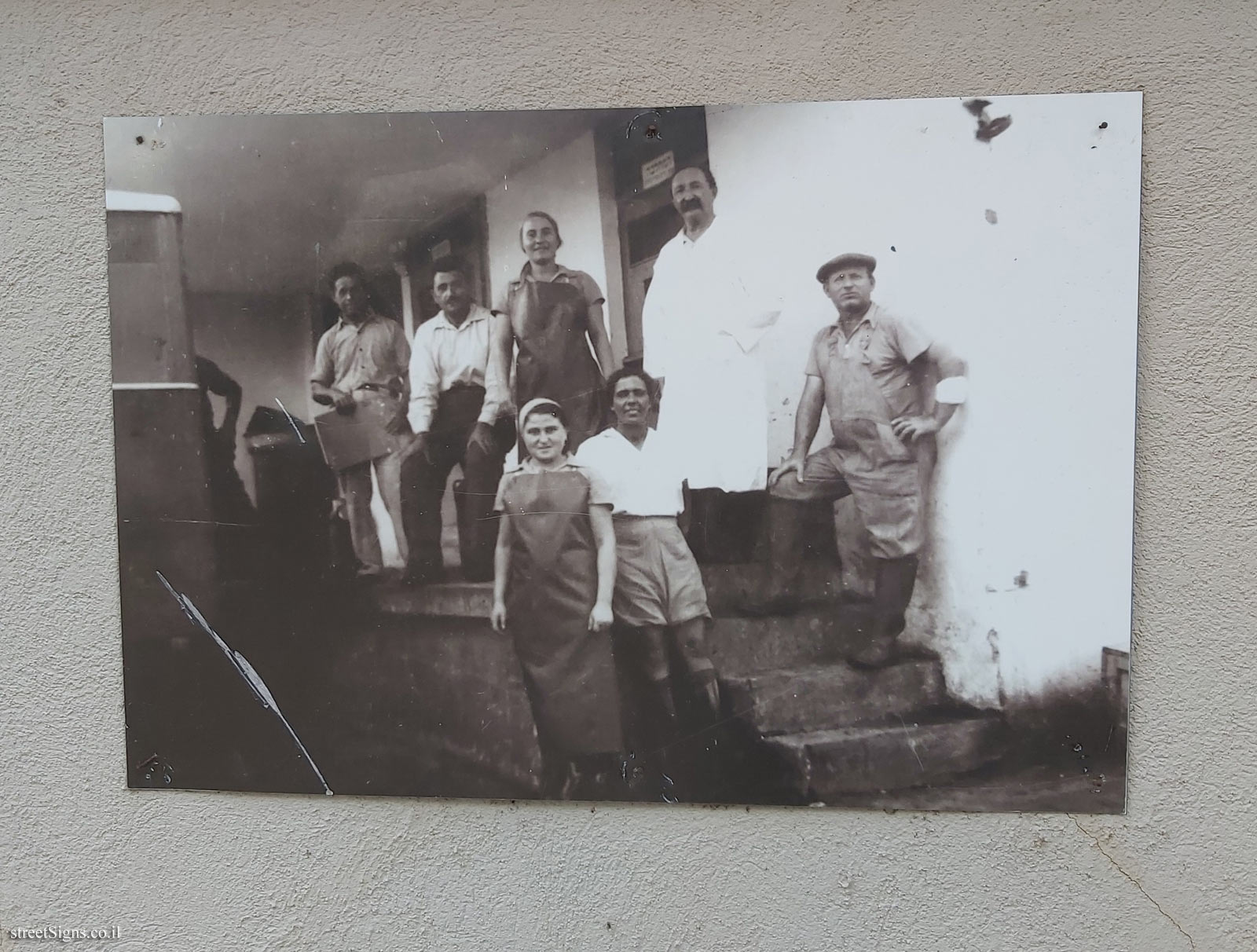The series of signs in Kfar Malal depict buildings related to the history of the locality
The reconstructed porch mentioned in the sign was taken that day
 Click for a larger image
Click for a larger image The picture of the porch indicated on the sign is near the current sign and was taken that day
 Click for a larger image
Click for a larger image Another picture, which is next door, shows the dairy building
 Click for a larger image Translation of the text on the sign
Click for a larger image Translation of the text on the sign:
The dairy Ein Hai Moshav (Kfar Malal) was established in 1912 and was based on irrigated crops (almonds and vineyards). After World War I and with the joining of the Jewish Brigade (in 1919), the settlement was changed to a workers’ Moshav (the first in the country), an agricultural settlement with a tiny family farm.
The area near the house was increased from 5 to 10 dunams where they grew a vegetable garden, livestock and a small orchard for self-consumption, self-employment, especially by the women!
In 1922, the cowshed (even before people had barracks) began to be built, as well as mobile chicken coops for free chickens for 50 to 200 birds. (Also behind the hut).
The dairy sector, the first branch in the moshav, was based on local cows (Damascus Arabs) who did not give enough milk. Mordechai Zilberg, one of the first and the leaders of the community, traveled especially to Lebanon and Romania to find, buy and bring "good cows", and then also Dutch bulls that improved the milk yield from 1000 to 4000 liters per year for each cow. The cows were milked overnight and the milk was transported early in the morning in wooden wagons to Sarona (Tel Aviv) while there were no roads and and there were harassers and thieves in the roads.
Often the members of the moshav really risked their lives (Yitzhak Margalit affair).
Equally important "produce" from milk is the organic manure that it and the water finally found, for the first time allowed intensive farming, especially planting orchards that were the second important branch after the cowshed. In exchange for the water well, a lot of money was paid and in addition "Were given for them" about 1000 dunams (in 1930) for the settlement of 1000, for Ganai Am, Yarkona and Ramatim.
The dairy: The need for a dairy was created in the 1920s, when they could not lead the milk on Saturday and made fat through a separator , cheese and yogurt.
In 1934, the dairy was first connected to the power line. Tnuva has developed and increased the dairy that provided work for many of the founders of the moshav, including Bogin Yakov Krupnik, Mardi Nadav, Luzovik, Burstein, Brodner Israel (pictured in the reconstruction of the terrace), Levkowitz (Lavi) Mambush, Siroshkin and
Pinchas Sapir]. Schneider Zilberg and Ben Yehuda were on the dairy committee.
The cowshed industry was actually eliminated after the War of Independence because of the proliferation of thefts in the cowshed. For this reason, the dairy was also closed (in 1955) this terrace was used for acceptance and delivery to the milk in the ramp here. The balcony was restored according to the picture posted here on the road.
The first shack and the courtyard (at the back) integrate with the "Museum of the Beginning of the Yishuv" which is completed for the 100th anniversary of the moshav, as part of the ongoing preservation of additional sites in the moshav.
The 1912 water well, the pool of water, the ancient oak grove and the Oil mill - al-Haya , from which the idea came from the original name of the moshav - Ein Hai, where unfortunately, it was replaced by Malal village and even more sadly, also the Casuarina avenue It was a symbol of the Moshav that gave way to the widening of the main road (in 1944), but the village knew how to mention and preserve the historic name and called the (main) road a living eye.

 Click for a larger image
Click for a larger image  Click for a larger image
Click for a larger image  Click for a larger image
Click for a larger image